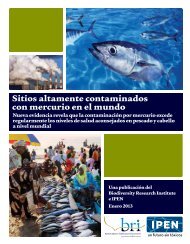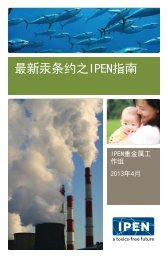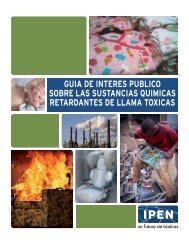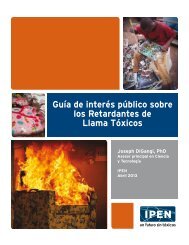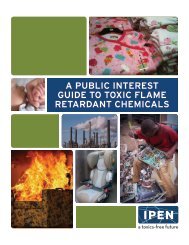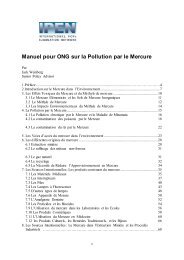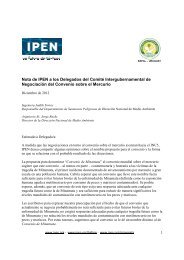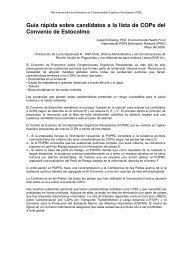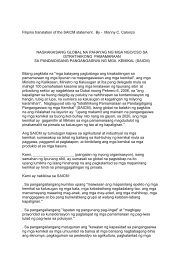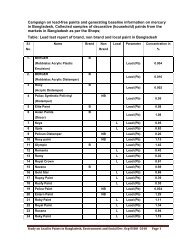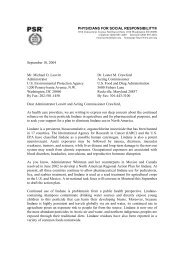The UNDP-GEF POPs Resource Kit - International POPs Elimination ...
The UNDP-GEF POPs Resource Kit - International POPs Elimination ...
The UNDP-GEF POPs Resource Kit - International POPs Elimination ...
Create successful ePaper yourself
Turn your PDF publications into a flip-book with our unique Google optimized e-Paper software.
(vii) assessment of social and economic implications of <strong>POPs</strong> use and reduction;<br />
including the need for the enhancement of local commercial infrastructure for<br />
distributing benign alternative technologies/products;<br />
(viii) assessment of monitoring and research and development, and chemical<br />
analytical capacity; and<br />
(ix) identification of <strong>POPs</strong>-related human health and environmental issues of<br />
concern; basic risk assessment as a basis for prioritization of further action<br />
taking into account, inter alia, potential releases to the environment and size of<br />
exposed population.<br />
Step 3: Setting of priorities and determination of objectives<br />
(i) development of criteria for prioritisation, taking into account health,<br />
environmental, and socio-economic impact and the availability of alternative<br />
solutions; and<br />
(ii) determination of national objectives in relation to priority <strong>POPs</strong> or issues.<br />
Step 4: Formulation of a National Implementation Plan, and specific Action Plans on <strong>POPs</strong><br />
(iii) identification of management options, including phasing out and risk<br />
reduction options;<br />
(iv) determination of the need for the introduction of technologies, including<br />
technology transfer; possibilities of developing indigenous alternatives; and<br />
(v) assessment of the costs and benefits of management options;<br />
(vi) development of a national strategy for information exchange 21 , education,<br />
communication and awareness raising, taking into account risk perception of<br />
<strong>POPs</strong> by the public; and<br />
21 Information exchange on alternatives and reduction/elimination options is<br />
crucial to the long-term success of the Convention. Article 9 makes<br />
provision for a clearinghouse mechanism entrusted to the Secretariat of the<br />
Convention, and to Parties’ obligation to designate a Focal Point to<br />
facilitate this exchange. It is suggested that in the interim, and before<br />
the clearinghouse mechanism is fully operational, support should be given<br />
to strengthen client countries’ capacity in information exchange. This<br />
should be wide ranging, and should cover information between parties as<br />
well as information within a country. <strong>The</strong> focal point should have the<br />
capacity to assess information that it receives, and to dispatch it to the<br />
relevant actors in country. It should also be in a position to assess what<br />
information within a country that may need to be circulated.<br />
<strong>UNDP</strong>-<strong>GEF</strong> <strong>POPs</strong> <strong>Resource</strong> <strong>Kit</strong>-----------------------------------------------------------------------------------------115



